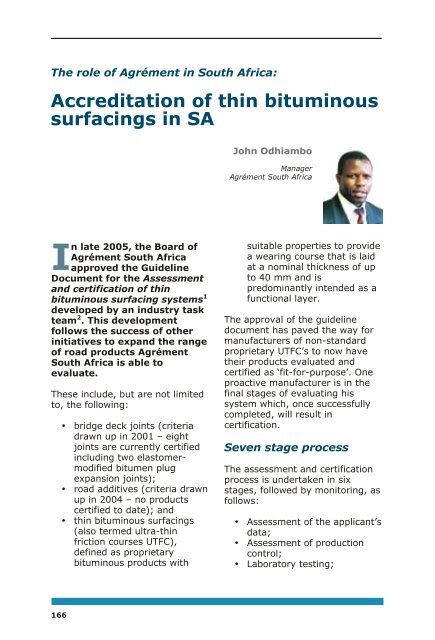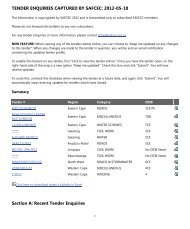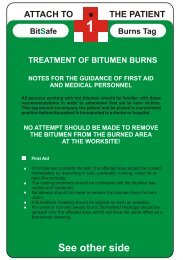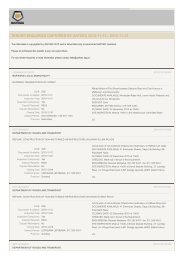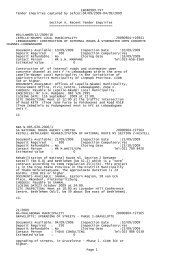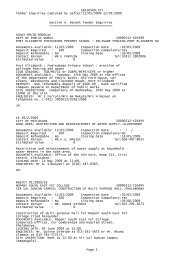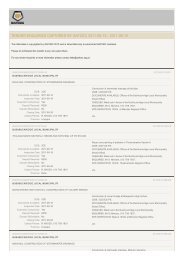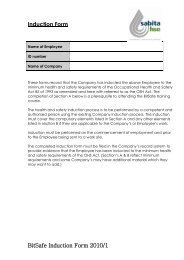DIGEST 2006 - Sabita
DIGEST 2006 - Sabita
DIGEST 2006 - Sabita
Create successful ePaper yourself
Turn your PDF publications into a flip-book with our unique Google optimized e-Paper software.
The role of Agrément in South Africa:<br />
Accreditation of thin bituminous<br />
surfacings in SA<br />
John Odhiambo<br />
Manager<br />
Agrément South Africa<br />
In late 2005, the Board of<br />
Agrément South Africa<br />
approved the Guideline<br />
Document for the Assessment<br />
and certification of thin<br />
bituminous surfacing systems 1<br />
developed by an industry task<br />
team 2 . This development<br />
follows the success of other<br />
initiatives to expand the range<br />
of road products Agrément<br />
South Africa is able to<br />
evaluate.<br />
These include, but are not limited<br />
to, the following:<br />
• bridge deck joints (criteria<br />
drawn up in 2001 – eight<br />
joints are currently certified<br />
including two elastomermodified<br />
bitumen plug<br />
expansion joints);<br />
• road additives (criteria drawn<br />
up in 2004 – no products<br />
certified to date); and<br />
• thin bituminous surfacings<br />
(also termed ultra-thin<br />
friction courses UTFC),<br />
defined as proprietary<br />
bituminous products with<br />
suitable properties to provide<br />
a wearing course that is laid<br />
at a nominal thickness of up<br />
to 40 mm and is<br />
predominantly intended as a<br />
functional layer.<br />
The approval of the guideline<br />
document has paved the way for<br />
manufacturers of non-standard<br />
proprietary UTFC’s to now have<br />
their products evaluated and<br />
certified as ‘fit-for-purpose’. One<br />
proactive manufacturer is in the<br />
final stages of evaluating his<br />
system which, once successfully<br />
completed, will result in<br />
certification.<br />
Seven stage process<br />
The assessment and certification<br />
process is undertaken in six<br />
stages, followed by monitoring, as<br />
follows:<br />
• Assessment of the applicant’s<br />
data;<br />
• Assessment of production<br />
control;<br />
• Laboratory testing;<br />
166


